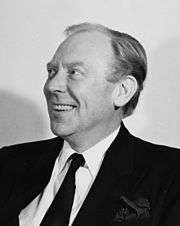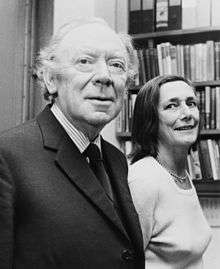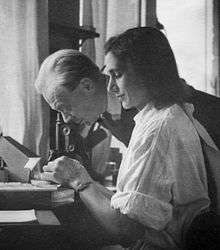Robert Russell Race
Robert Russell Race CBE FRS FRCP FRCPath MRCS (28 November 1907 – 15 April 1984) was a British medical doctor and human geneticist. He was Director of the Medical Research Council Blood Group Unit, of the Lister Institute of Preventive Medicine. His second wife, whom he married in 1956, was Ruth Sanger, who succeeded him in the post.
Robert Russell Race | |
|---|---|
 | |
| Born | 28 November 1907 |
| Died | 15 April 1984 |
| Occupation | Scientist |
| Spouse(s) | Margaret Monica Rotton (1938–1956) Ruth Sanger (1956–1984) |


Career
In 1937, after training at St Bartholomew’s Hospital in London, Race worked as a serologist in the blood-typing department being established by Ronald Fisher at the Galton Laboratory at University College London.[1][2] The serum unit moved to Cambridge at the beginning of the Second World War, and in 1941 Race and Arthur Mourant began investigating the family of Rh antigens.[2] This work followed from developments made by Karl Landsteiner and Alexander S. Wiener in the USA.[3]
In 1946 Race was appointed head of the Medical Research Council Blood Group Research Unit.[4] During the same year, Ruth Sanger moved to London to complete her PhD. She joined Race's group as assistant to Race. Sanger and Race married in 1956 following the death of Race's first wife.[3]
Together Race and Sanger published Blood Groups in Man in 1950,[5] which eventually spanned six editions.[6] Their work continued in the 1960s with the discovery of the Xg antigen system and mapping the X chromosome.
Race retired in 1973, and Sanger was named as director of the MRC Blood Group Unit. They received many honors and awards in their joint names, including the Karl Landsteiner Memorial Award and the Gairdner Award.[3]
References
- "RACE, Robert Russell". Who Was Who. Online Edition: A & C Black, Bloomsbury Publishing Plc. 2014.
- Mollison, P.L. (2004). Robert Race. Oxford Dictionary of National Biography. 1. Oxford University Press. doi:10.1093/ref:odnb/31575.
- "The Robert Race and Ruth Sanger papers". Wellcome Library. Retrieved 23 August 2016.
- Clarke, Cyril (1 January 1985). "Robert Russell Race. 28 November 1907 – 15 April 1984". Biographical Memoirs of Fellows of the Royal Society. 31: 455–492. doi:10.1098/rsbm.1985.0016. JSTOR 769933.
- Mollison, P. L. (13 January 1951). "Review of Blood Groups in Man by R. R. Race and Ruth Sanger". Br Med J. 1 (4697): 75. PMC 2068012.
- "Dr R. R. Race". The Times. London, England. 1 May 1984.
External links
| Wikimedia Commons has media related to Robert Russell Race. |
The Robert Race and Ruth Sanger papers are kept at the Wellcome Library. They have been digitised and are available online.